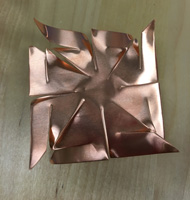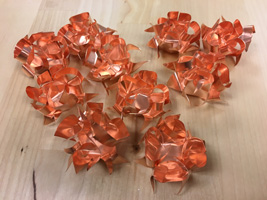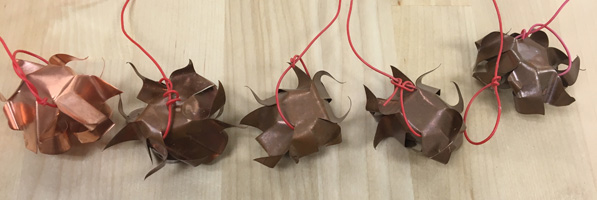Casting Glass & Metal
Jennifer Weiler
This page catalogs some of the glass and metal casting projects I have done.
The majority of this work was done with the purpose of becoming more familiar with glass and metal casting so that I could better determine how 3D printing could make the fabrication process easier or expand what types of sculptures can be created.
In this experiment, 3D printed plastic takes the place of the traditionally sculpted material (usually clay) that is used to make the original rubber mold. The rubber mold can then be used to make multiple wax replicas of the original design.

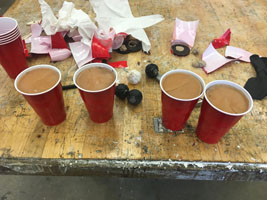
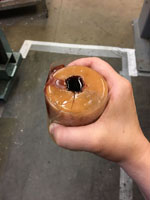
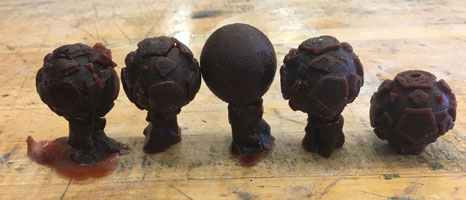
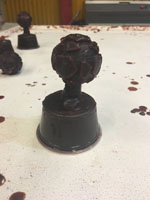
The wax replicas are then repeatedly dipped in a silicon slurry to create a shell. The shell is then fired, draining out the molten wax and leaving the empty shell.
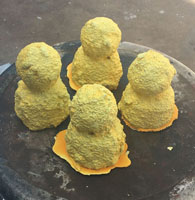
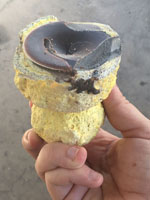
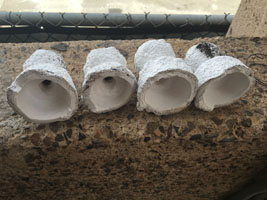
Casting glass requires very precise heating and cooling (which changes based on the specific type of glass and how much of it you have). In this case, the glass was cooled down too quickly, causing some cracks to form, which caused the pieces to break when the shell was cracked open.
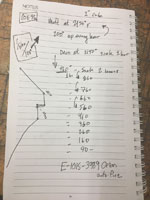
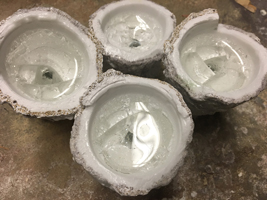

As an alternative, 3D printed plaster (zcorp prints), can have glass directly cast into it. However, each 3D print can only be used to make one glass piece, because they are destroyed in the casting process. In addition, because of the way 3D plaster prints are fabricated, there are limits to what shapes can be made.


As a cheaper, more easily fabricated alternative to glass, clear resin can be used in some cases.

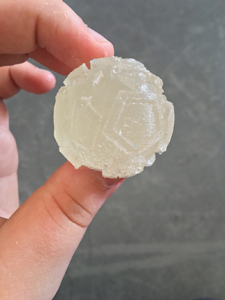
In many ways, the casting process for metal is very similar to that for glass. First, the 3D prints are used to make molds that are filled with hot wax

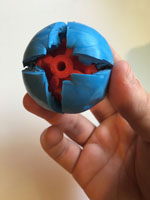
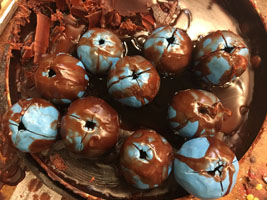

The wax models are attached and shelled.
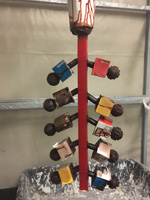
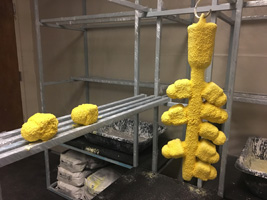
After the wax is drained out of the shell, molten metal (bronze) is poured in.


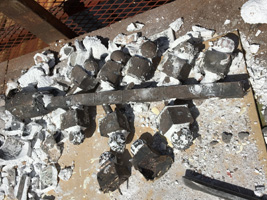
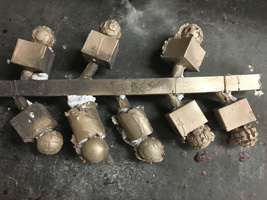
After the shell is broken open, the metal pieces are cut and assembled into the finished piece.
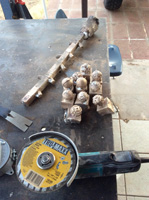
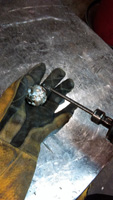

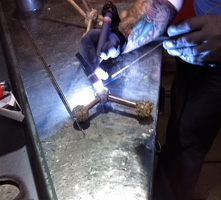
To see more about the research that this sculpture was a part of, click here.

Instead of using additive 3D fabrication (3D printed models), it is also possible to use subtractive methods to make models for casting. As part of a joint ASU-Bennington College art project, 3D models are carved out of styrofoam and then used to cast metal.
To see more about how the 3D model was generated, click here.
Left: vase shape cut out of styrofoam. In order to get inner detail, the model had to be cut in different sections. Right: vase glued together and given added surface detail using plaster. From this point, the model will be cast in rubber -> wax -> shell -> metal.


In addition to casting, metal can also be manipulated by cutting and shaping.
In this case, copper foil was used to observe ozone in different areas of Phoenix.
